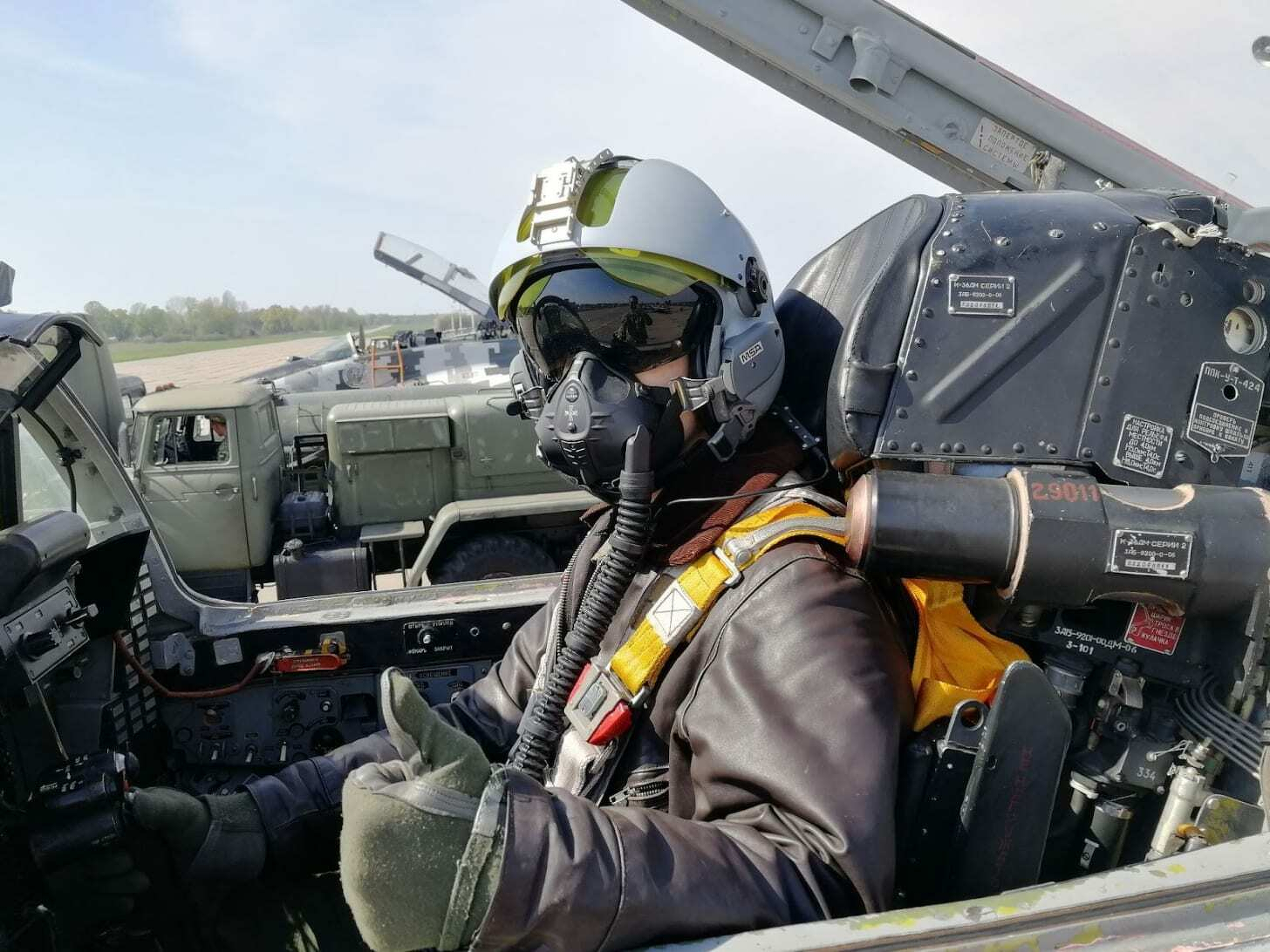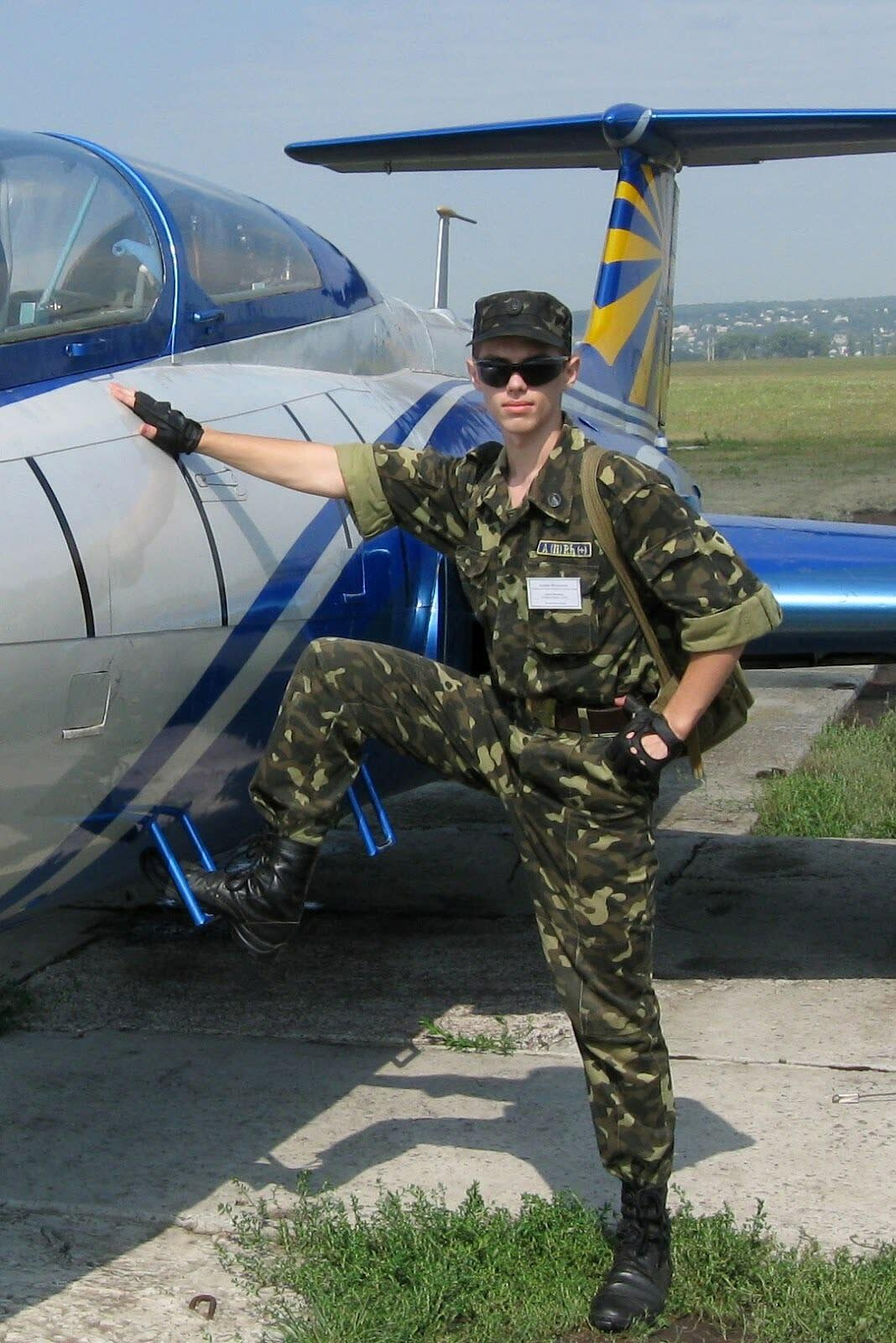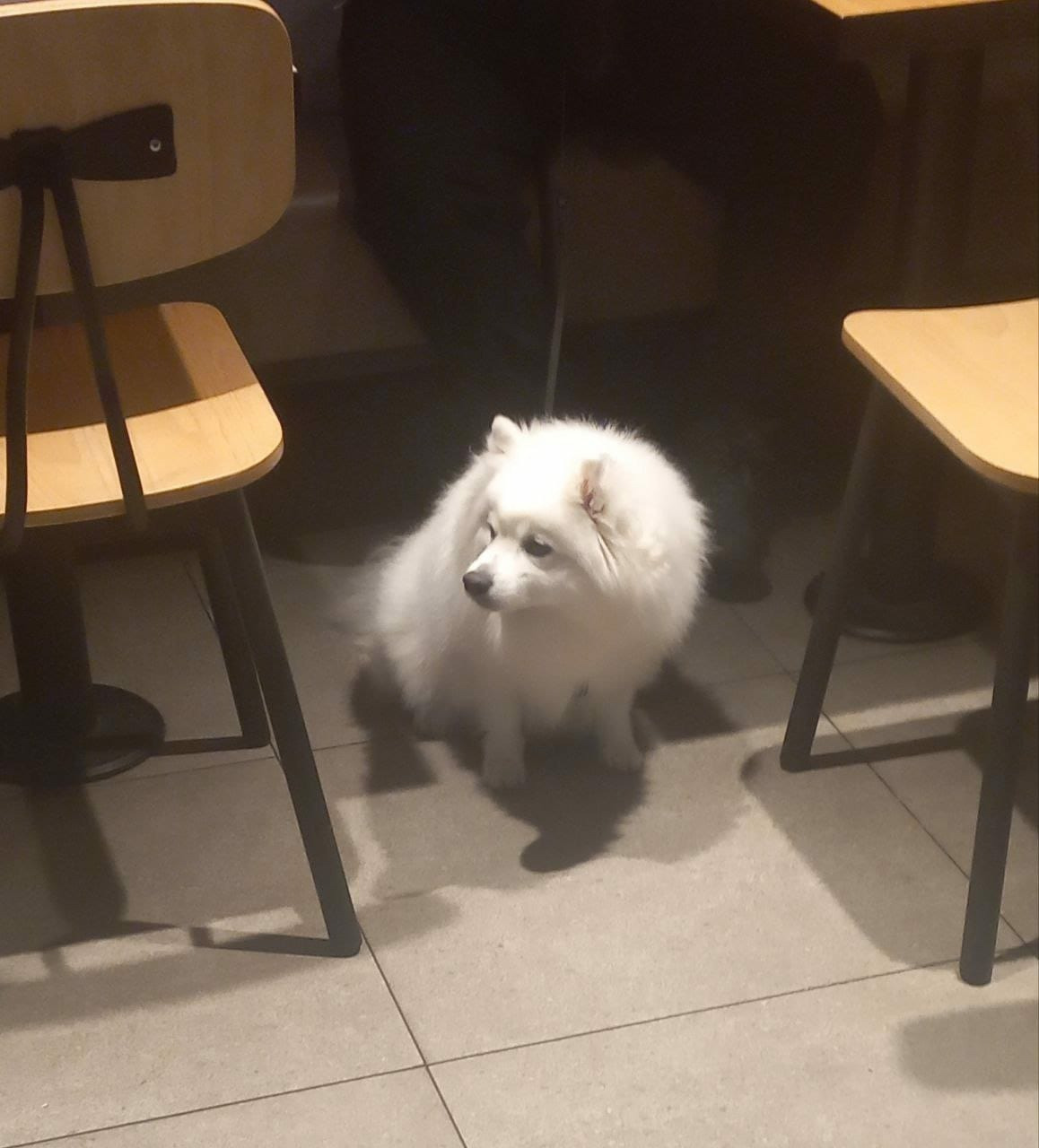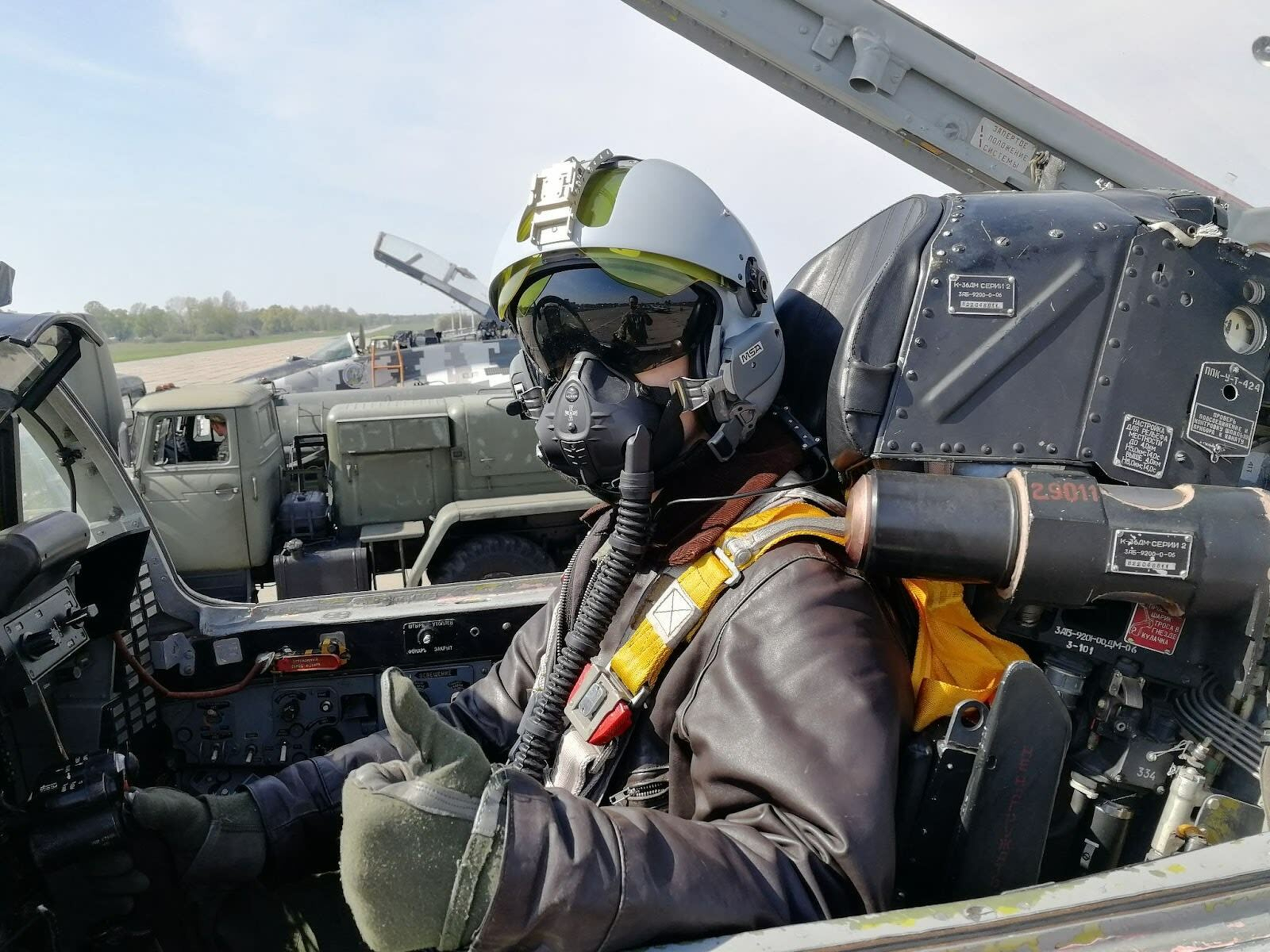
Featured subscriber comment:
“Independent journalism is one of the few remaining sources of truth in a world increasingly threatened by authoritarians. You’ve built something special at the Counteroffensive, and you and your team do critical work. This was my first paid Substack subscription, and I am committed to supporting your work. I urge everyone to consider supporting Tim and his team with a paid subscription.”
By our subscriber Daria Steigman
It’s the end of the 2000s.
Sixteen-year-old Andrii lies in the fields of Kharkiv region, spending hours lying in tall grass with a camera and a bottle of water, photographing the training flights of cadets from the nearby Air Force University.
He wore camouflage to blend in. ‘Someday, I will be like them,’ he likely thought. A pilot crossing the blue skies.
But today, he is here only as an amateur photographer, a silent observer.
His dream came true. 20 years later he became a Ukrainian pilot who helped Ukraine to get F-16 fighter jets, which earlier was considered almost impossible.
Like getting Tomahawks now.
Despite earlier hopes, Trump and Zelenskyy did not agree on the vital supply of Tomahawk long-range missiles last Friday. The missiles could significantly increase Ukraine’s ability to strike far-off Russian targets, and in particular target Russia’s vulnerable energy production sector.
Instead, in private White House meetings, Trump threw aside a map showing the battlefield in Ukraine. Swearing profusely, he urged Zelenskyy to give up territories and repeated Kremlin talking points that Putin was merely holding back, according to the Financial Times. “If [Putin] wants it, he will destroy you,” Trump reportedly said.
So much for Trump’s supposed 180 degree turn on Ukraine. With the president’s negotiating position depending on who he spoke with last, it’s a dangerous signal to both Putin and Europe that America cannot be trusted.
The only way to stop Russia is to force it to stop. For the time being, we’re talking about missiles, but two years ago the discussion was about fighter jets. And as we weigh the advantages of military aid now, it’s instructive to look at the last round – and how it was overcome.
One of the key figures who made it possible for Ukraine to get F-16s was a man named Andrii ‘Juice’ Pilshchykov.
Juice’s path was shaped by his father, an engineer who “could make the impossible happen,” his mother Liliia recalled. His father designed simulators for cosmonauts and training halls for the Zaporizhzhia Nuclear Power Plant. He also constructed the coat of arms that still sits atop the Kharkiv Regional Administration building – even after withstanding a Russian missile strike.
From childhood, he instilled in Juice a love of technology, and after assembling his first toy airplane at age five, the boy became fascinated by aviation. This passion was nurtured by a distant cousin — a pilot who had been to every continent. Each time, he brought Andrii posters or other souvenirs.
When Juice was ten, his father died of illness. Soon after that, his cousin — the pilot — died in a plane crash. Perhaps it was then that Juice decided he would become a pilot.
Juice saw an F-16 for the first time in 2011 at a U.S.-Polish-Ukrainian exercise. Then a teenage spotter, he had no idea that a decade later, he would stand before American lawmakers pleading for those same jets to defend his country’s skies.
Just as F-16s changed Ukraine’s defensive capabilities, long-range missiles like the Tomahawk or Barracuda can alter the country’s offensive capabilities by making Russian targets hundreds of miles away vulnerable to new attacks.
With the U.S. withholding Tomahawks, Ukraine’s strikes rely heavily on drones which are smaller, slower, easier for Russian air defenses to intercept. Even so, those drones have managed to disable more than a fifth of Russia’s oil refining capacity, with some attacks reaching as deep as 2,000 kilometers into Siberia. Tomahawks, far more powerful and precise, could extend that reach dramatically.
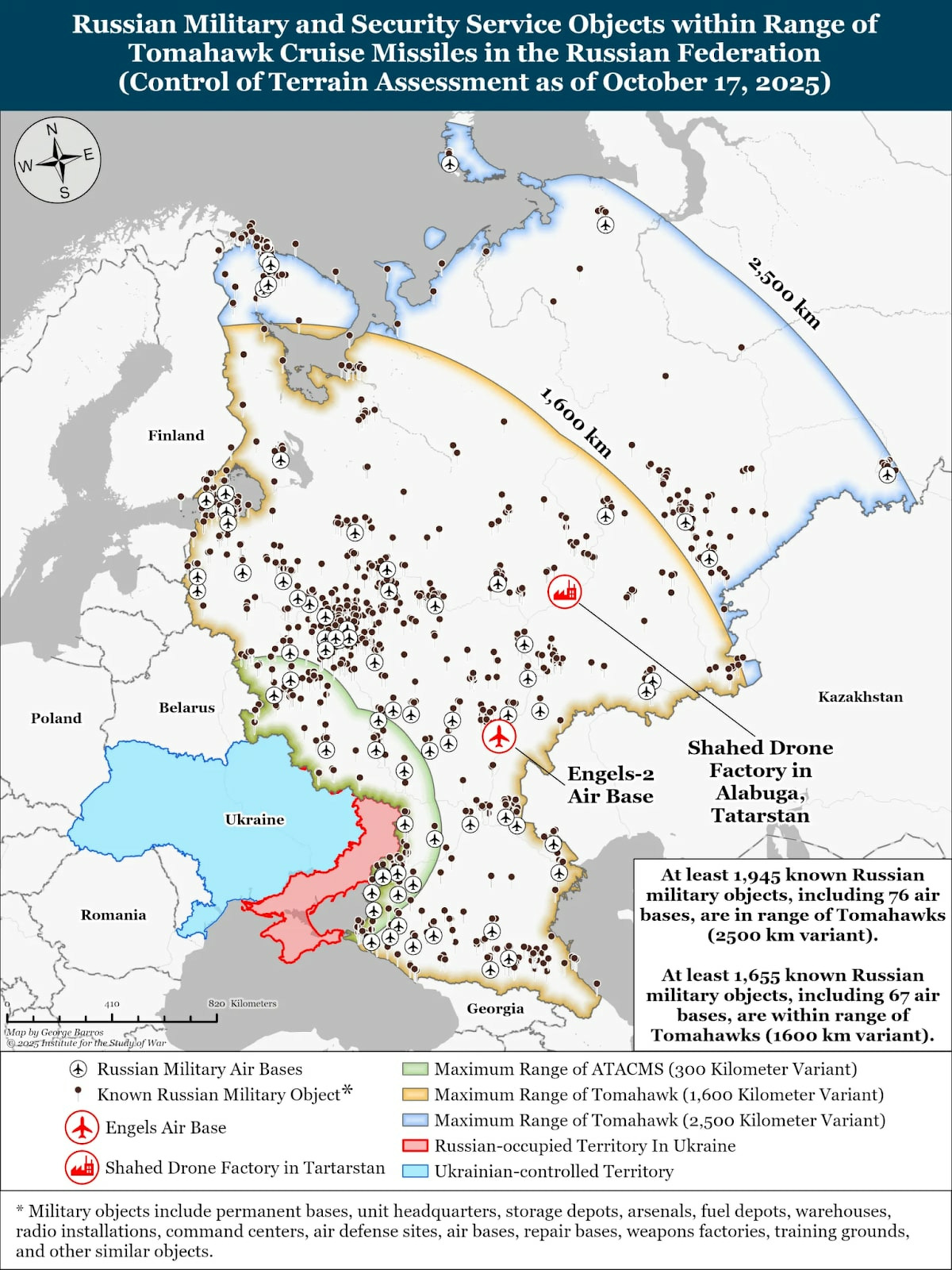
Meanwhile, Tomahawks would prove a fearsome capability, due to their accuracy and much bigger warheads. Kyiv, for example, could strike the facility producing ‘Shahed’-type drones in Yelabuga (Republic of Tatarstan) and the ‘Engels-2’ airbase in the Saratov region, where strategic bombers that launch cruise missiles at Ukraine are stationed.
Only the U.S., the U.K., and Australia currently have Tomahawks, and their use requires Typhon ground systems or compatible aircraft and submarines.
For a brief moment this month, it seemed the U.S. might finally approve Tomahawks. Washington had begun sharing more precise targeting intelligence with Kyiv, and officials close to the talks said Trump appeared receptive.
Then, after a phone call with Vladimir Putin on October 16, on the eve of a meeting with Zelenskyy, the momentum stopped abruptly.
According to Ukrainian officials, the conversation between Trump and Putin shelved the question of Tomahawks and, instead, revived the same old Russian demands for territorial concessions, including parts of Donetsk, in exchange for an uncertain peace.
It was not any easier with the F-16s negotiations.
From 2016 to 2021, Juice served as a military aviator in Ukraine’s armed forces. But by the time Russia’s full-scale invasion began, Andrii had already left the air force after disagreements with his command.
For all of those years, Juice dreamed of making Ukraine’s air force modern, breaking Soviet traditions and challenging the “gray-haired generals” unable to change.
When war came, he returned, first as an infantryman, then as a pilot again by spring 2022. The young officer quickly became one of the loudest voices pushing to modernize Ukraine’s air force, frustrated by what he saw as Soviet-era inertia among senior generals.
He dreamed that Ukraine would be part of NATO. He did everything he could to make it happen.
Through an American friend, military historian Adam Makos, Juice and his colleague Oleksii ‘Moonfish’ Mes traveled to Washington in mid-2022. They met with senators, retired pilots, and defense officials, arguing that Ukrainian pilots could learn to fly F-16s quickly and that the jets could change the balance of the air war.
By the end of the evening, lawmakers had drafted the ‘Ukrainian Pilots Act’ to fund pilot training in the U.S. Though the bill never passed, it opened the door for the training program that would follow. Today, F-16s carry out about 80 percent of Ukraine’s air missions.
“No one believed in it the way he did. But he was unstoppable — he knew it would happen, that was it. He just kept pestering everyone until it did,” said Liliia, a mother of Juice, to The Counteroffensive.
The first statements from European politicians about the possibility of transferring F-16s to Ukraine appeared only at the beginning of 2023. Until May, the US hesitated to allow other countries to transfer these fighters or even train Ukrainian pilots to fly them.
Andrii died in 2023 in a crash involving training-combat aircraft, three days before he was to leave for an F-16 training program abroad. His mother believes the air force command had excluded him from the first group because of his outspoken criticism of leadership.
“Now, on the battlefield, there are many people who came from civilian life, they are like ‘fresh blood.’ They are changing the rules in the army and transforming this old Soviet system,” said Liliia.
However, the ‘fresh blood’ needs weapons to fight on the battlefield effectively. Now, Ukraine’s hopes hinge on newer systems like the Barracuda-500: cheaper, simpler, and able to strike up to 900 kilometers. They carry smaller warheads than the Tomahawk but are faster and easier to launch from multiple platforms, including HIMARS and F-16s.
For Kyiv, these could complement longer-range systems and make deep strikes into Russia more feasible.
Unfortunately, Juice won’t see it coming. If it happens at all.
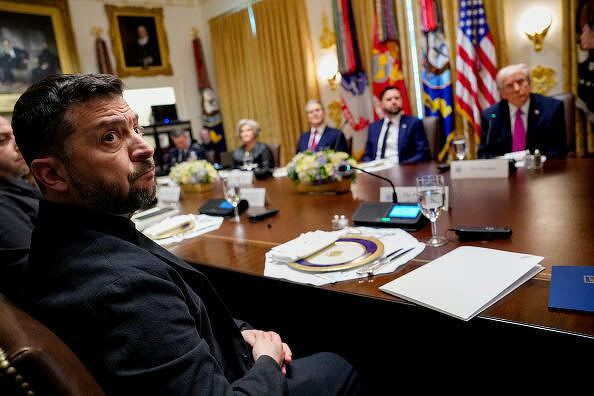
During the last Zelenskyy and Trump meeting, it was reportedly more of a “shouting match,” echoing the meltdown in the Oval Office that happened in February. It means that Tomahawk deliveries probably are no longer even on the table. Trump is simply not interested in meaningfully increasing Ukraine’s leverage over Russia.
Meanwhile, Moscow recently started to expand Engels-2 airbase, where the main efforts of Russian strategic aviation are concentrated. It signifies that Moscow is preparing to intensify attacks on Ukraine even more as winter approaches. At the time when Kyiv needs to boost its deep strike capabilities the most, it is left without vital support which could save lives.
After Andrii’s death Lillia moved to Kyiv, renting an apartment near her son’s grave to visit the cemetery every day.
“Andrii’s mission remains unfinished, which gives me the sense that his presence continues. If I didn’t do something, or did the wrong thing, he would already have scolded me for it in my dreams,” Liliia said.
In a turbulent world, where landings are almost never smooth, Ukrainian mothers often feel they have no time to grieve the loss of a child. Instead, their duty is to continue their child’s work.
Now she has become a reform advocate, pressing for changes in Ukraine’s military and for continued Western support. She stays in touch with pilots, raises problems with politicians, and has built a memorial near Andrii’s grave for Ukrainian airmen who have died since 2014.
“The West is armed to the teeth,” she said. “They could end this war in a day — but they hesitate.”
All hesitation to aid Ukraine is measured in blood.
Featured subscriber comment:
“Independent journalism is one of the few remaining sources of truth in a world increasingly threatened by authoritarians. You’ve built something special at the Counteroffensive, and you and your team do critical work. This was my first paid Substack subscription, and I am committed to supporting your work. I urge everyone to consider supporting Tim and his team with a paid subscription.”
By our subscriber Daria Steigman
NEWS OF THE DAY:
By: Zoriana Semenovych
Good morning to readers; Kyiv remains in Ukrainian hands.
UKRAINE PLANS CONTRACT FOR 25 PATRIOTS: Ukraine is preparing a contract with American defense companies for the supply of 25 Patriot air defense systems, President Volodymyr Zelenskyy announced. These systems, which are a priority for the Ukrainian Air Force, will be delivered over several years, taking into account the queue among different countries, with possible priority given to Ukraine.
The plan is to finance this through the use of frozen Russian assets and other security agreements with partners.
UKR ENERGY RENOVATION TO BE ACCELERATED: During an extraordinary meeting, the Cabinet of Ministers of Ukraine established the Energy Protection Coordination Headquarters to ensure the uninterrupted functioning of vital infrastructure.
Its main task is to streamline the protection of energy, transport infrastructure, communication and life support systems. The Headquarters will lead the efforts of core responsible institutions, such as the Ministry of Energy, the Ministry of Internal Affairs, Ukrenergo, Naftogaz, the State Emergency Service, and regional and local authorities. Additionally, funding was allocated to protect and restore critical infrastructure in frontline areas, including railway systems.
Such measures aim to ensure energy security and maintain the stable operation of state institutions throughout the winter, when Russian aggression tends to intensify. For instance, after the recent attack on a coal mine in the Dnipropetrovsk region, 192 miners were trapped underground. Similarly, a Russian strike caused extensive damage to the electric grid in the Chernihiv region and cut off electricity to 55,000 users.
U.S. PRESSURES INDIA TO CUT RUSSIAN OIL: Trump’s administration is increasing pressure on India, Reuters reports, demanding that it reduce its purchases of Russian oil, which currently account for about 40% of Russia’s total exports. This move is part of a broader effort to limit the Kremlin’s financial inflows and force Moscow to sell its energy resources under less favorable conditions. Oil profits remain the financial foundation of Russia’s war against Ukraine.
DOG OF WAR:
Today’s dog of war is a white fluffy dog that Zoriana saw at a KFC cafe. He waited so loyally for the order that it was very sad to see his disappointed look when his owners didn’t share their food with him. Well, at least someone is sticking to the right diet!
Stay safe out there!
Best,
Tania

